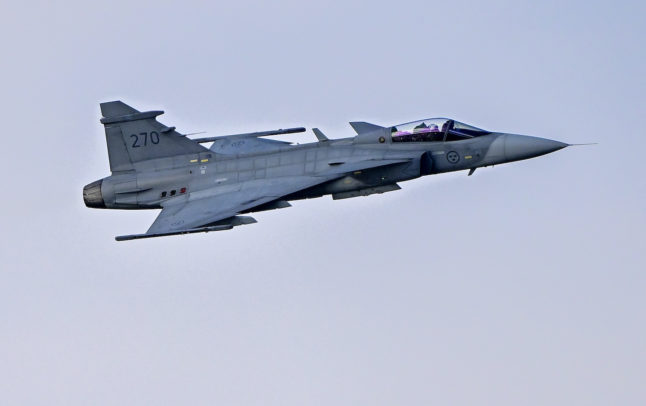At a press conference on Thursday, Social Democrat leader Magdalena Andersson said that Ukraine needed to strengthen its air capabilities if it were to succeed in reconquering territory lost to Russia.
“If Ukraine’s offensive is to succeed, its air defences need to be strengthened,” she said. “We cannot let Russia win. The Jas Gripen would make a big difference to Ukraine.”
In a press release, the party called for an analysis to begin immediately into the consequences for Sweden’s own defence of sending some Gripen planes, how much training Ukraining pilots would need, and how long it might take to arrange deliveries.
The party’s defence spokesperson, Peter Hultqvist, said that Sweden could either give the planes to Ukraine as military aid, sell Ukraine planes, or do a combination of both.
“The exact form of how this might happen is something we will have to return to. We of course see a perspective where we can both give support directly with deliveries, but also offer the possibility of exports,” he said.
Ukraine’s president, Volodymyr Zelensky, has repeatedly asked Sweden to send his armed forces Jas Gripen planes, and Denmark and The Netherlands have both agreed to send F16 jets, with pilot training already ongoing.
Some experts argue that the Gripen is more suitable to Ukrainian conditions, as they can use shorter, rougher runways than the F-16, even landing on roads in some cases, can fly low, and need smaller crews and support staff.
READ ALSO: Could Sweden’s ‘unique’ Gripen fighters help Ukraine?
Sweden’s government has so far resisted sending Gripen planes to Ukraine, saying that Sweden’s 90 jets are required for its own defence.
Defence Minister Pål Jonson has repeatedly stated that Sweden will not send Ukraine the planes.
“We have no planes to spare,” he said in May.



 Please whitelist us to continue reading.
Please whitelist us to continue reading.
Member comments